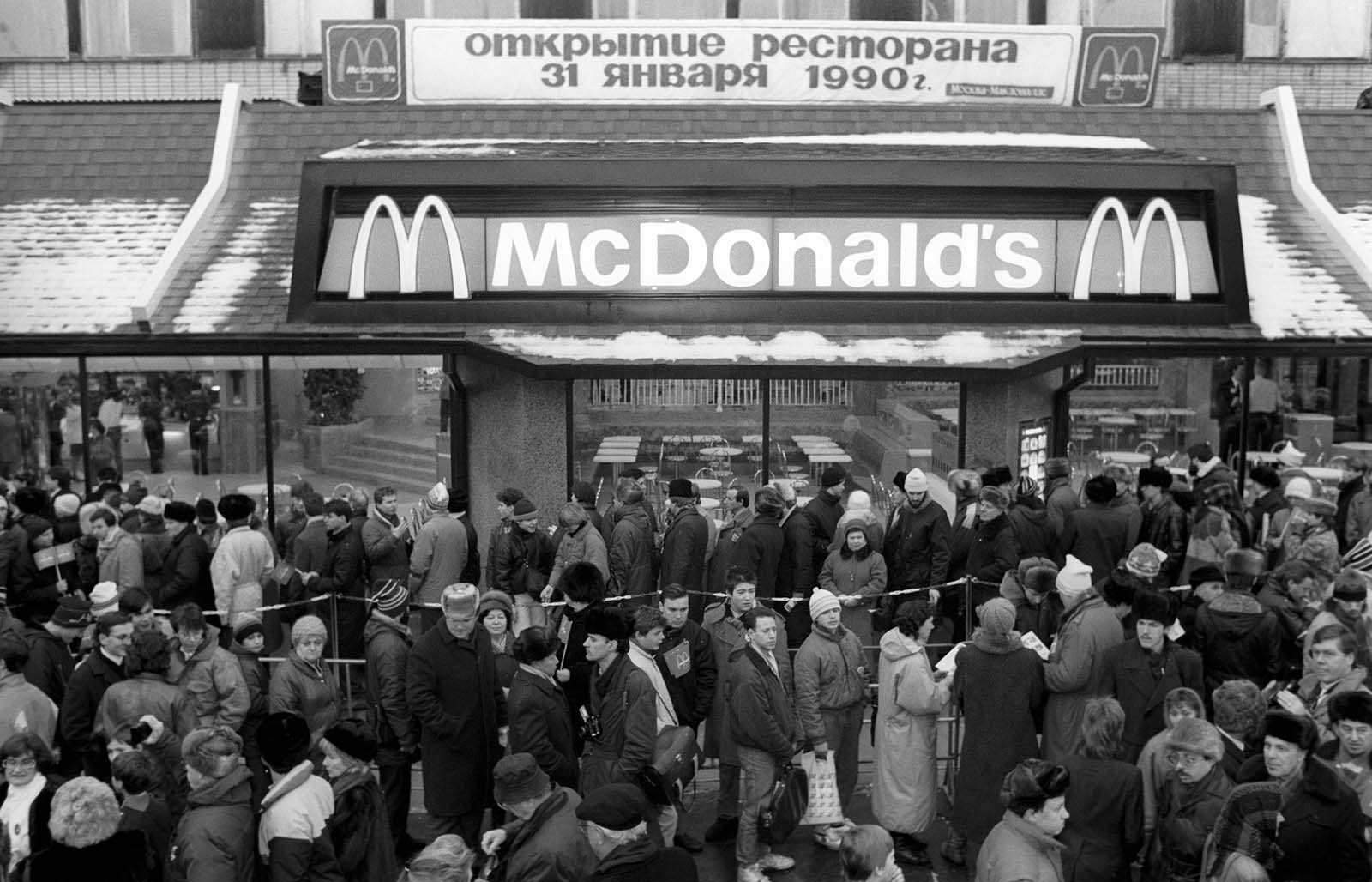
On January 31, 1990, the first Soviet McDonald’s opened in Moscow. The first McDonald’s ever in Soviet Union.
Nowadays it’s hard to believe that thousands of people would be willing to stand out in the cold for hours just to try a McDonald’s hamburger. But when the first McDonald’s arrived in Moscow in 1990, the whole city went mad.
The Moscow McDonald’s initiative was a joint venture between McDonald’s of Canada and the Moscow city council. A plan first envisioned when George Cohon, founder, and CEO of McDonald’s Canada, met Soviet Union officials at the ’76 Summer Olympics in Montreal. And almost a quarter of a century later, on January 31st, 1990 it became a reality.
The Russian capital’s inaugural McDonald’s set the record for most customers on its first day of opening by serving over 30,000 hungry punters. Budapest’s main branch of McDonald’s previously held the record, with 9,100 clients.
Thousands of Muscovites flocked to the new burger joint, forming lines several kilometers long in the center of Moscow on Pushkinskaya Square. The crowds of people were so huge that scores of policemen were sent to control the commotion, much like security at rowdy football matches.
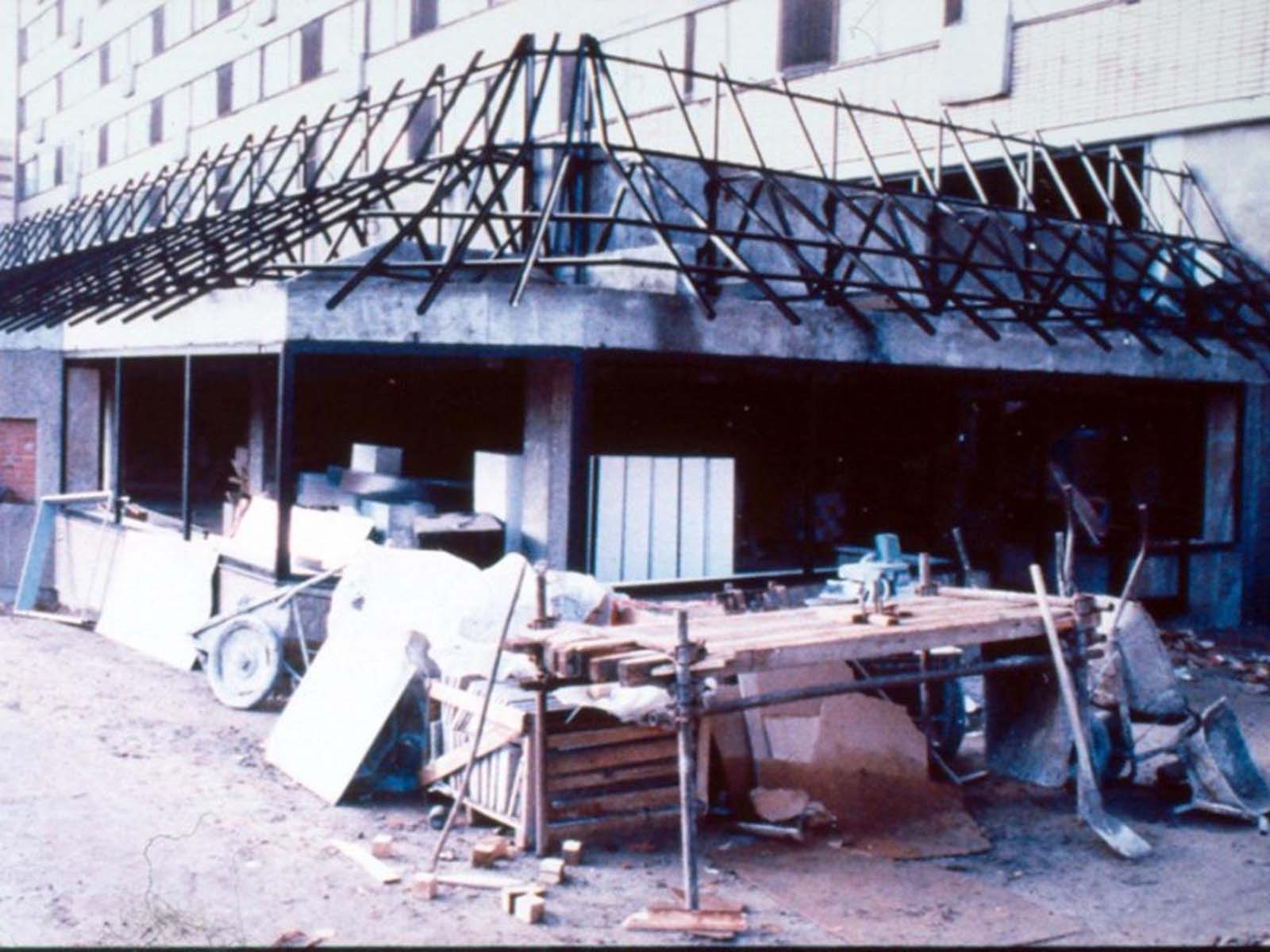
It was the largest McDonald’s in the world at the time of its construction.
At the time of its construction, it was the largest McDonald’s restaurant in the world. A venue with 900 seats with a staff of about 600 workers that were carefully selected from 35,000 applicants.
As a result, the first workers were the crème de la crème of Soviet youth: students from prestigious universities who could speak foreign languages with brilliant customer service skills were hired.
This new workforce was a sharp contrast to the typical Soviet service sector, known for being dismissive, unsmiling, and cold. Soviet people were so accustomed to rude, boorish service that when they were faced with the polite manners and beaming faces they were completely shocked. In fact, the customers felt so uneasy while being served by someone who was smiling that the McDonald’s chiefs asked their employees to smile less.
For the ordinary Soviet citizen during perestroika, McDonald’s offered a glimpse of what life (and eating out) was like over the Iron Curtain. People from Soviet Union heard so much about western culture without being able to get near it, so Soviet citizens really went mad when the golden arches rocked up in Moscow.
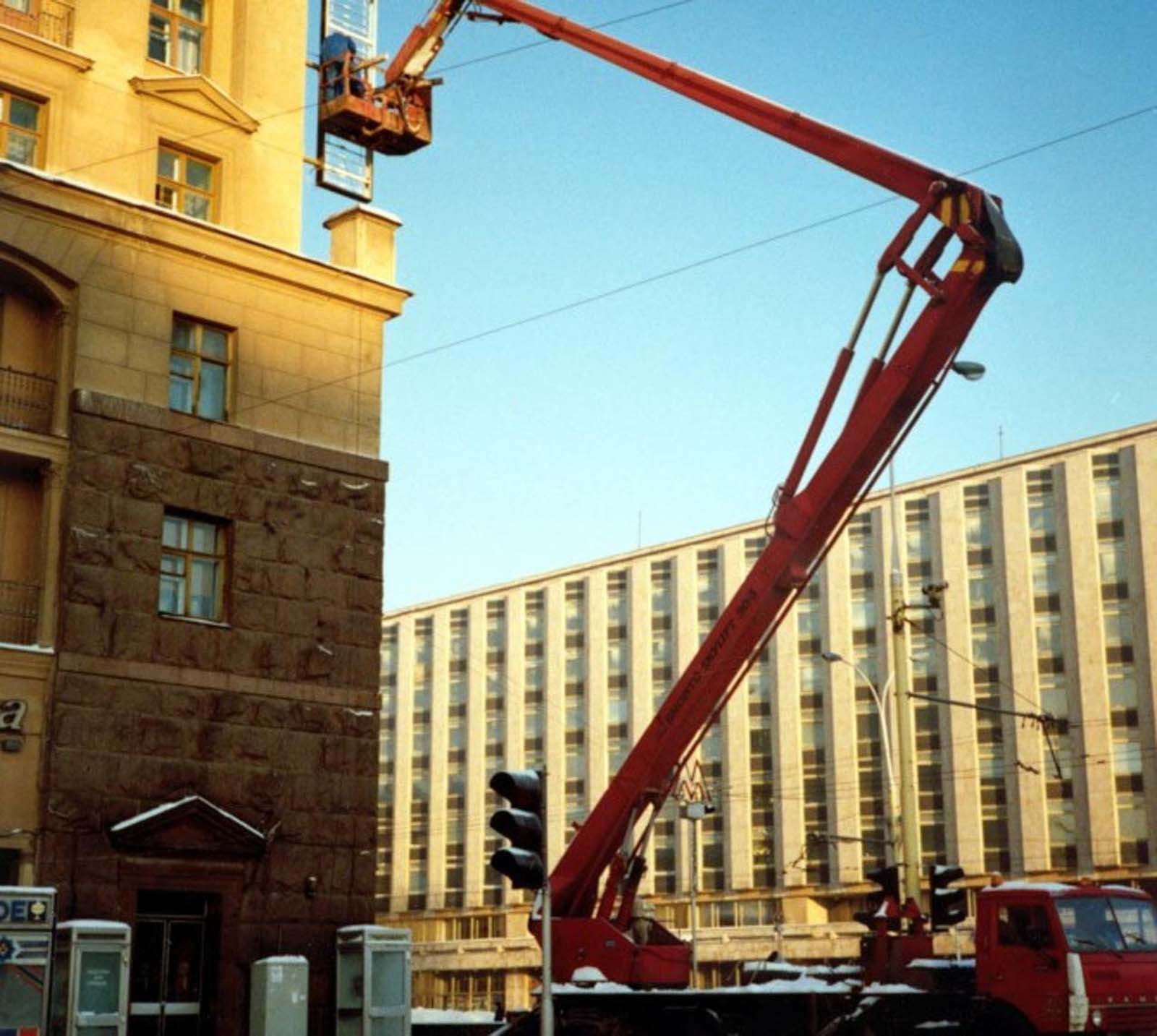
And a venue with 900 seats needed a lot of employees, too.
However, McDonald’s was not cheap in those days. In a country where the average salary was about 150 rubles per month, a Big “Mak” was selling for 3.75 rubles. One Big Mac cost the equivalent of a monthly bus/metro pass.
The summer came, but the lines just kept growing. People from other cities were flocking the McDonald’s restaurant just for a single hamburger. “We stood under the melting sun for around eight hours,” photographer Mitya Kushelevich recalled. “That wasn’t so much of a problem as we were used to standing in lines for days just to get our monthly ration of sugar and tea.”
“Once inside we were blown away by the number of young cashiers behind the huge counter, smiling, moving like bees, serving one meal after another.
Nothing like our fat old ladies in white gowns sitting in front of empty shelves, pyramids of dusty canned food as window dressing.” “I still remember how insanely huge the milkshake looked and I didn’t know how to hold a Big Mac with my tiny hands.”
In 1991 and 1992, long lines could still be seen and people had to wait for hours to enter. The crowds outside the Moscow restaurant did eventually die down a little from Jan. 31,1990, when more McDonald’s were opened in Russia.
The unveiling of the next McDonald’s restaurants were also considered big historic moments. The opening ceremony of the second restaurant in 1993 was even attended by President Boris Yeltsin.
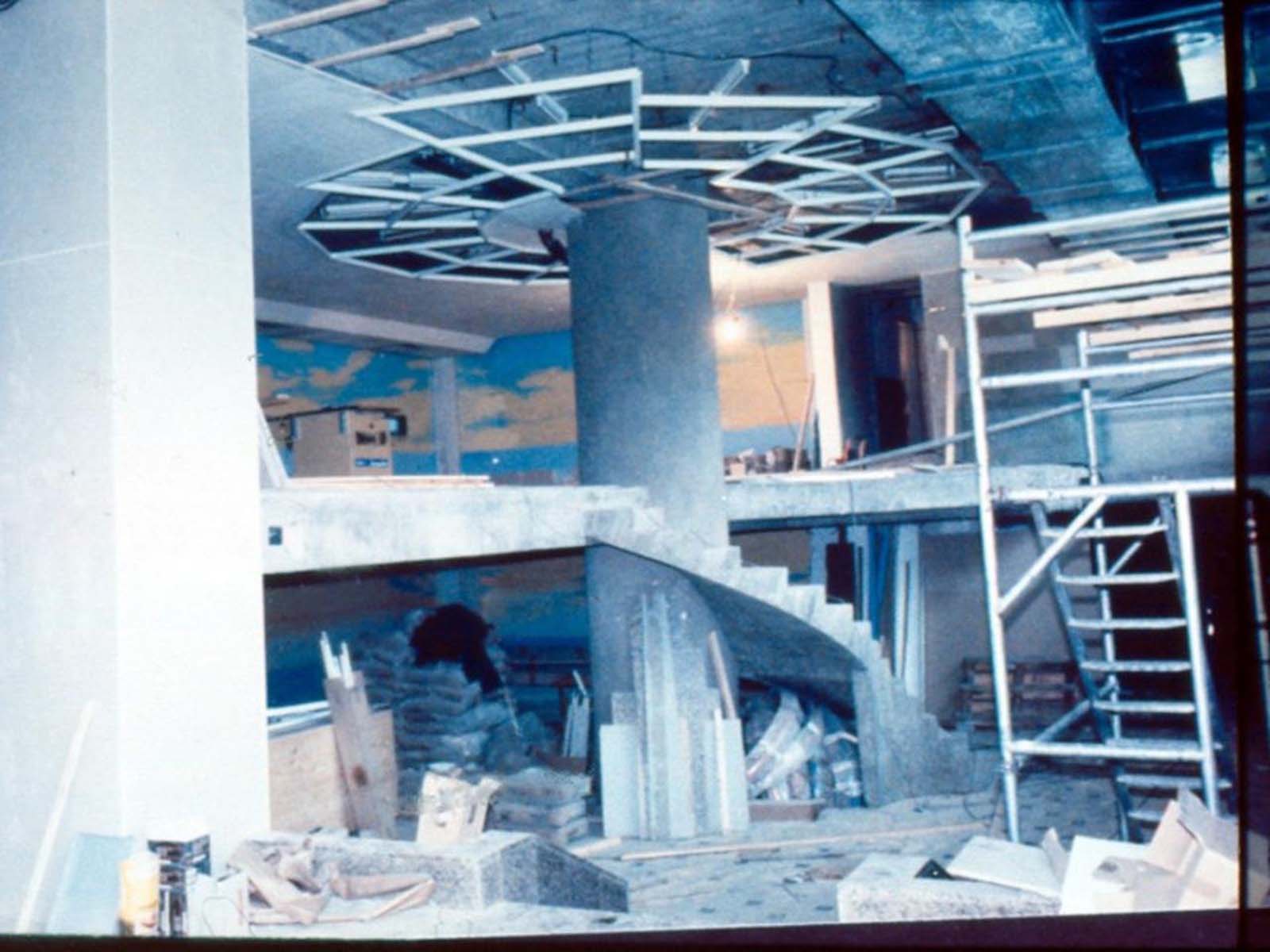
In a country where unemployment did not exist, 35,000 people applied for a job in the fast food restaurant.

Around 600 were hired.
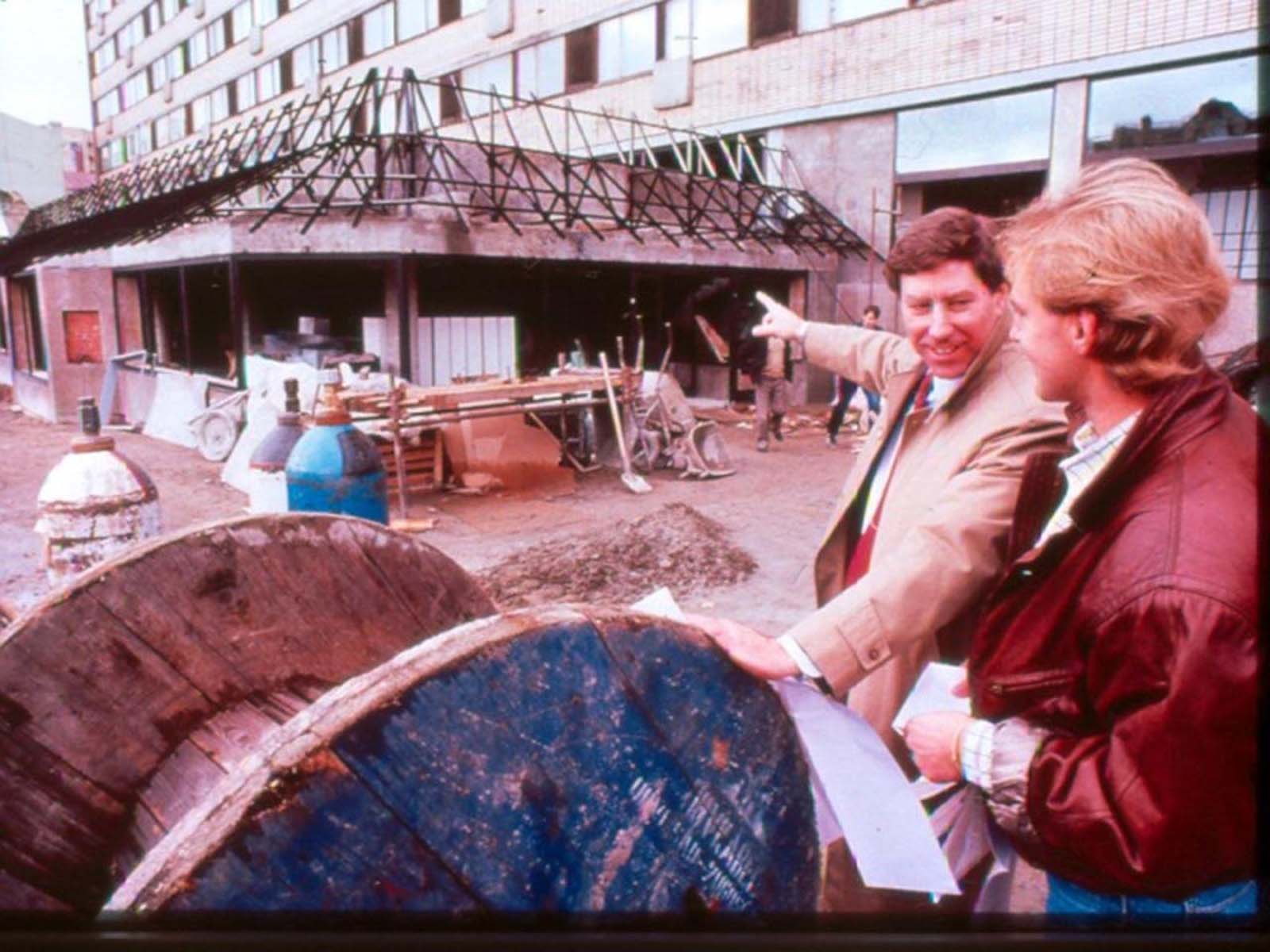
The venture had been in talks with the Soviet officials since 1976.
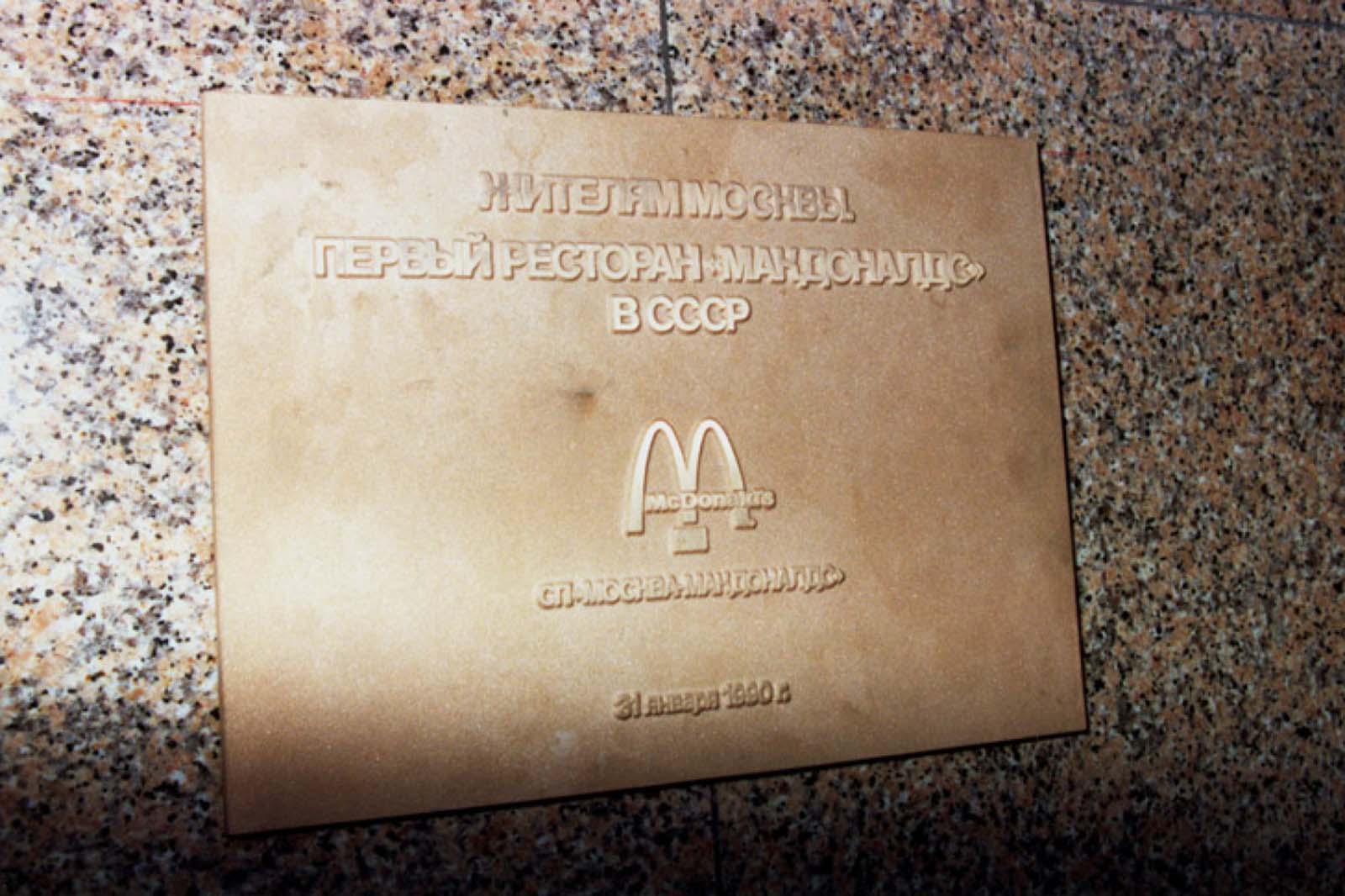
And you could say that the appearance of this notorious symbol of capitalism was a sign that times were changing.

Reportedly, the restaurant expected to serve around 1,000 during its first day, but more than 5,000 Russians lined up in Pushkinskaya Square before it even opened.

One Big Mac cost the equivalent of a monthly bus/metro pass.
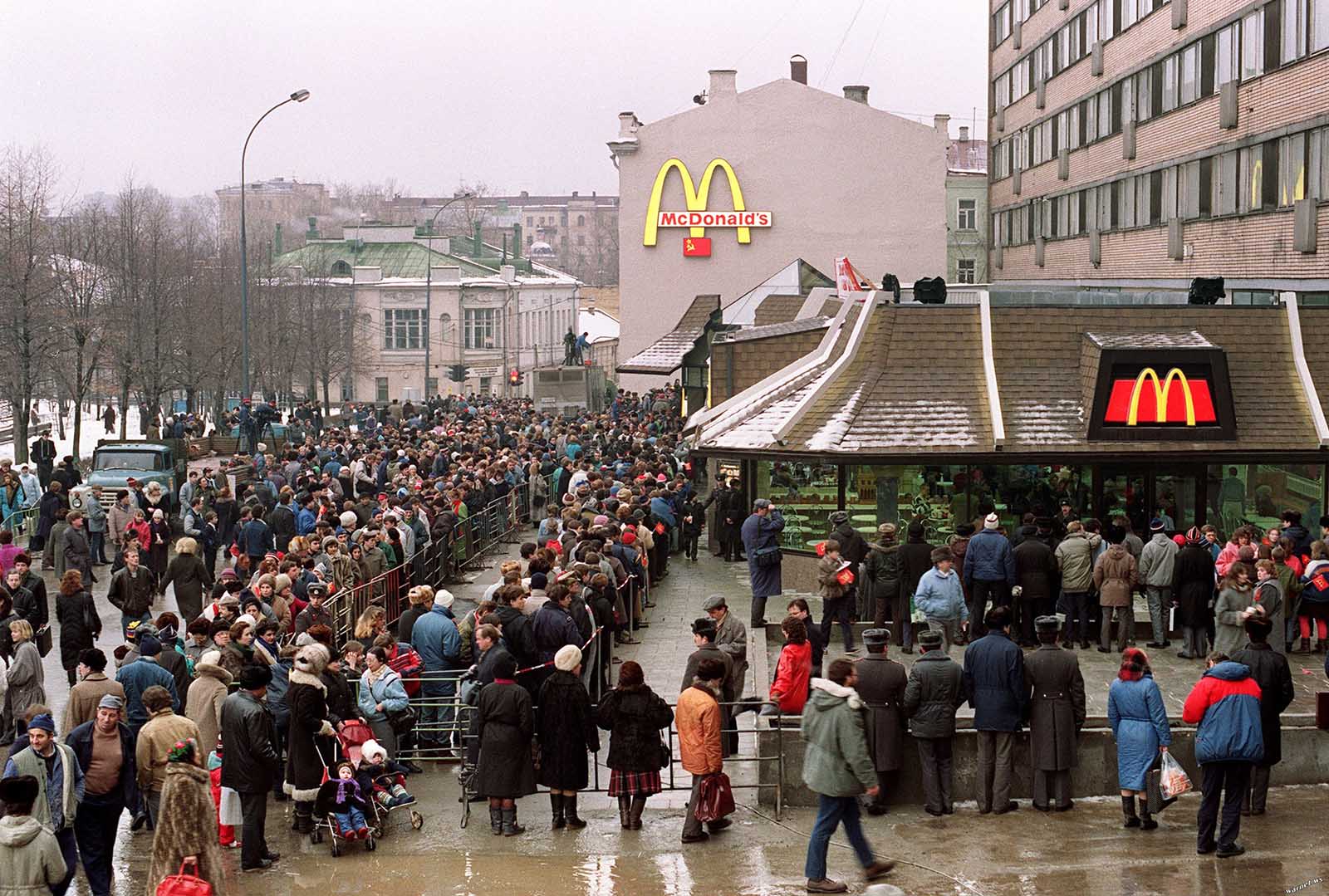
The summer came but the lines just kept growing. People from other cities were flocking the restaurant just for a single hamburger.
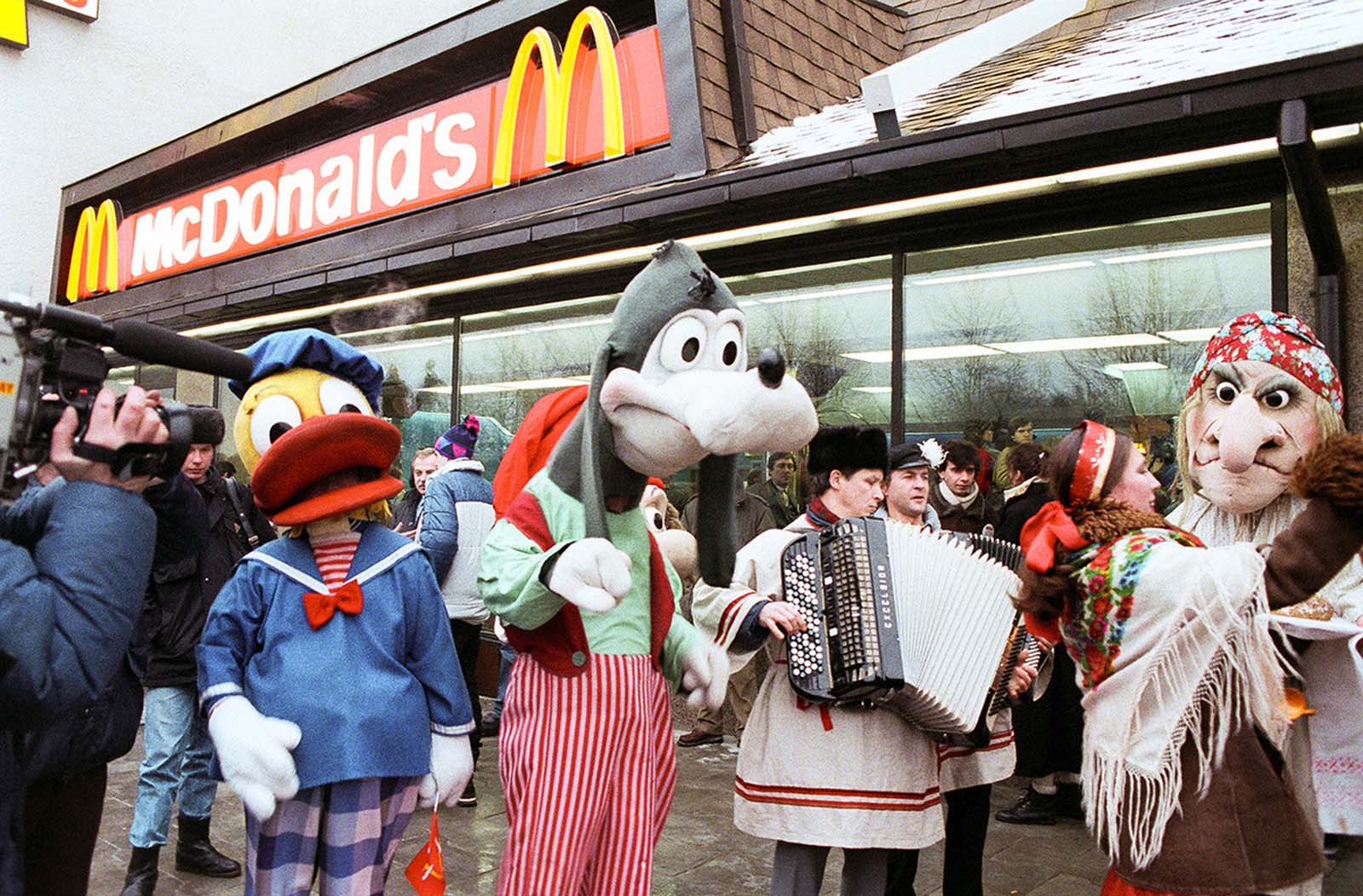
“We stood under the melting sun for around eight hours,” one visitor said.
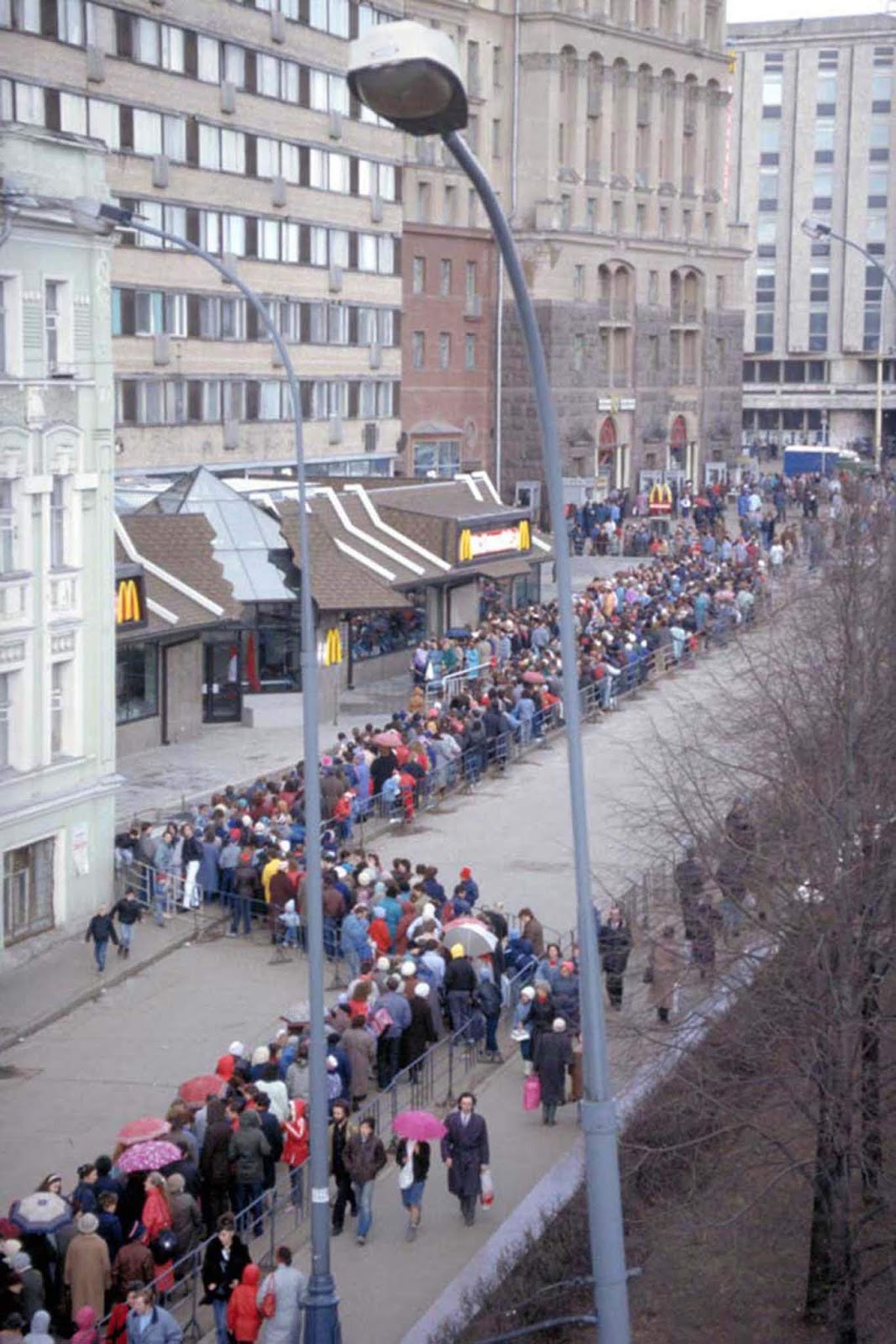
“That wasn’t so much of a problem as we were used to standing in lines for days just to get our monthly ration of sugar and tea”.
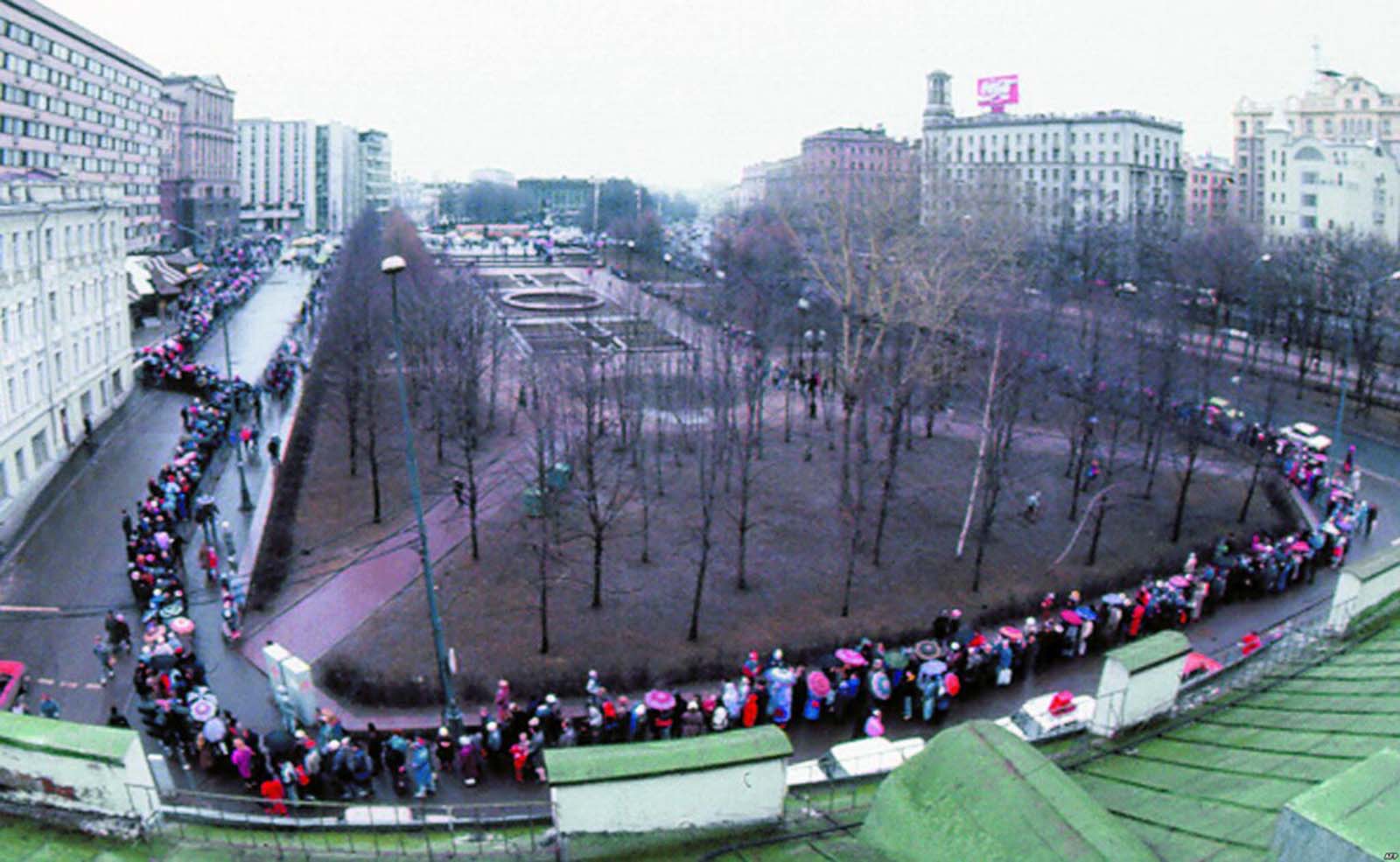
“Once inside we were blown away by the number of young cashiers behind the huge counter, smiling, moving like bees, serving one meal after another”.
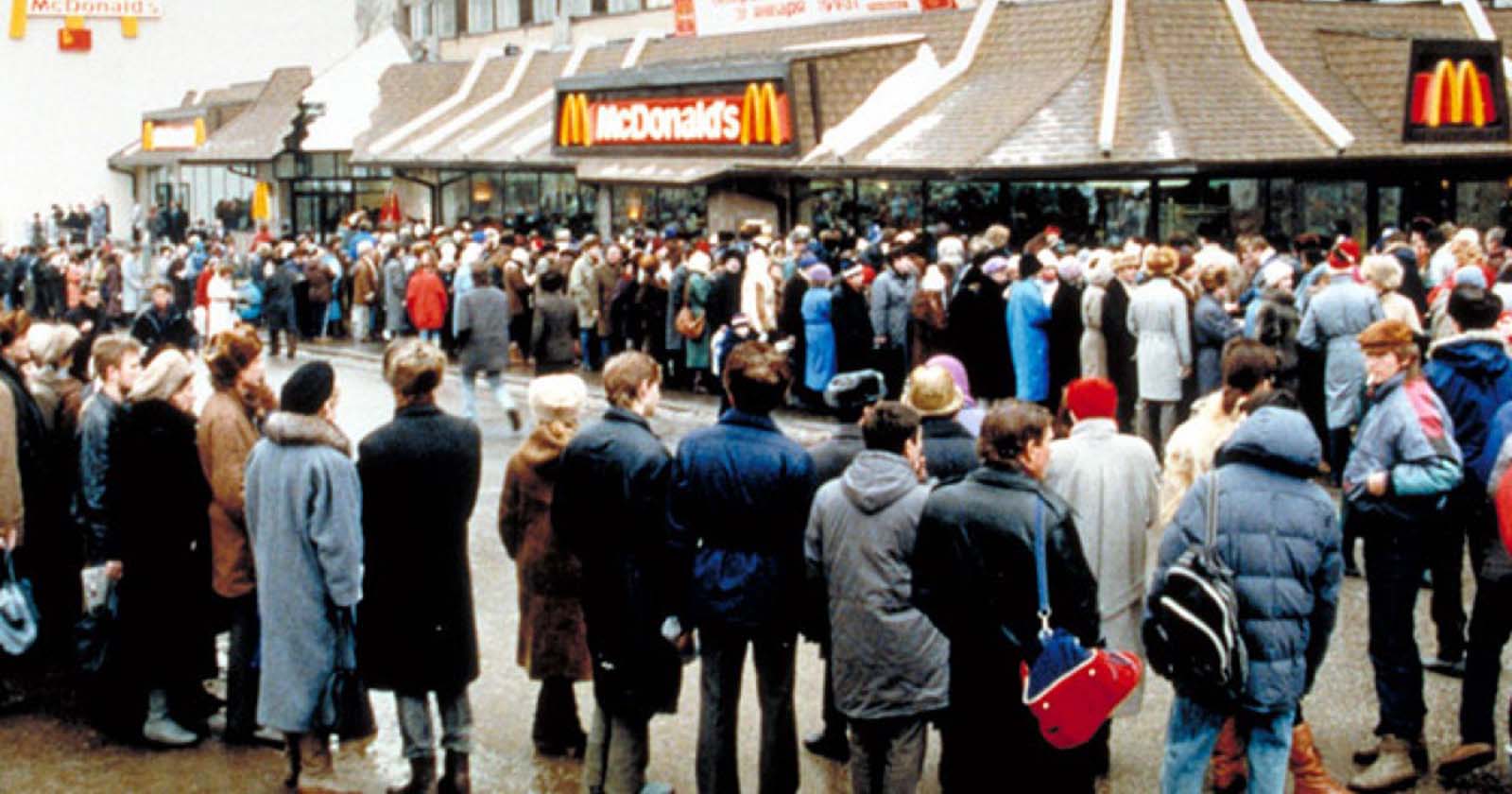
“Nothing like our fat old ladies in white gowns sitting in front of empty shelves, pyramids of dusty canned food as window dressing”.
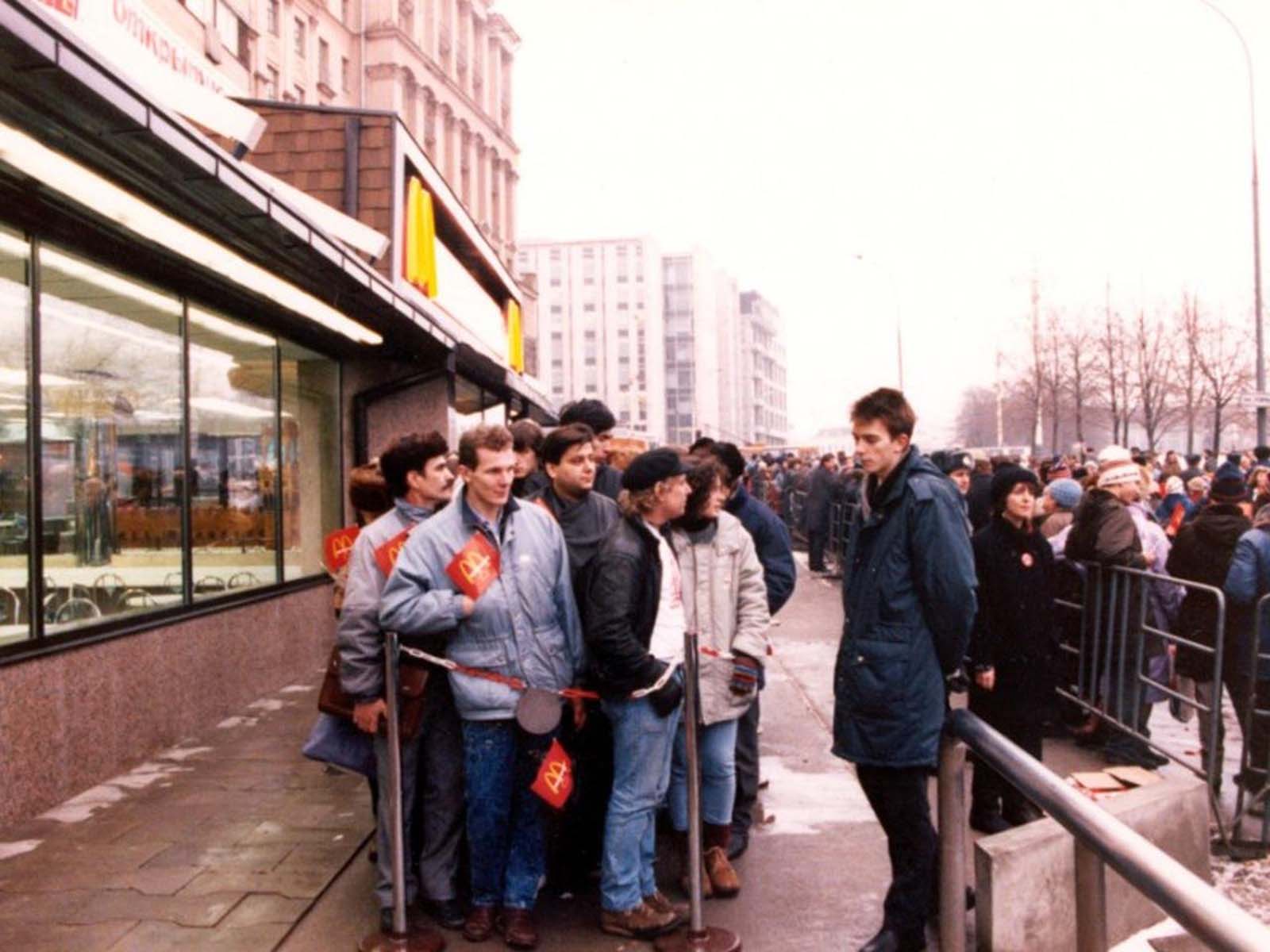
“I still remember how insanely huge the milkshake looked and I didn’t know how to hold a Big Mac with my tiny hands”.
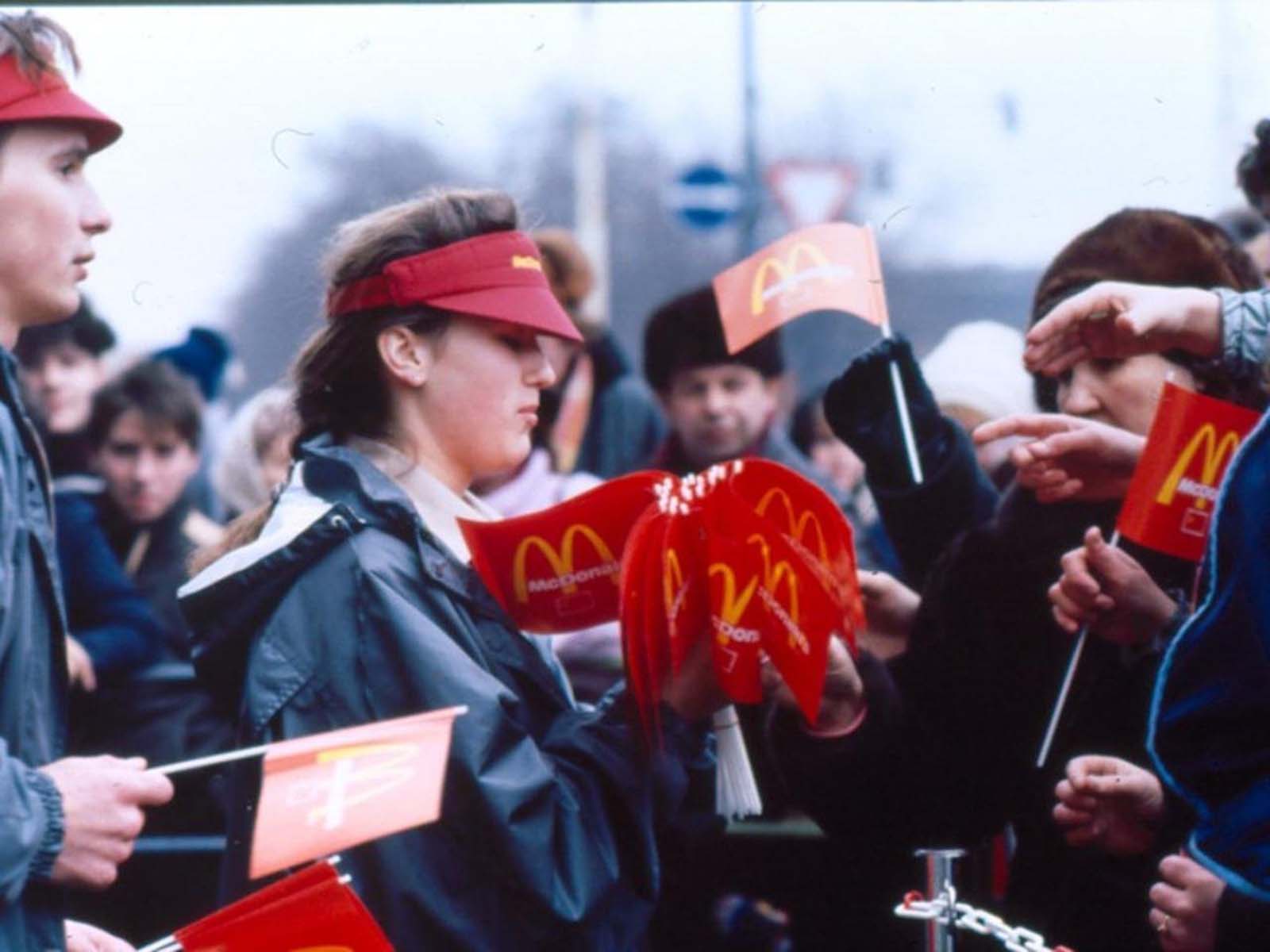
The Moscow McDonald’s initiative was a joint venture between McDonald’s of Canada and Moscow city council.
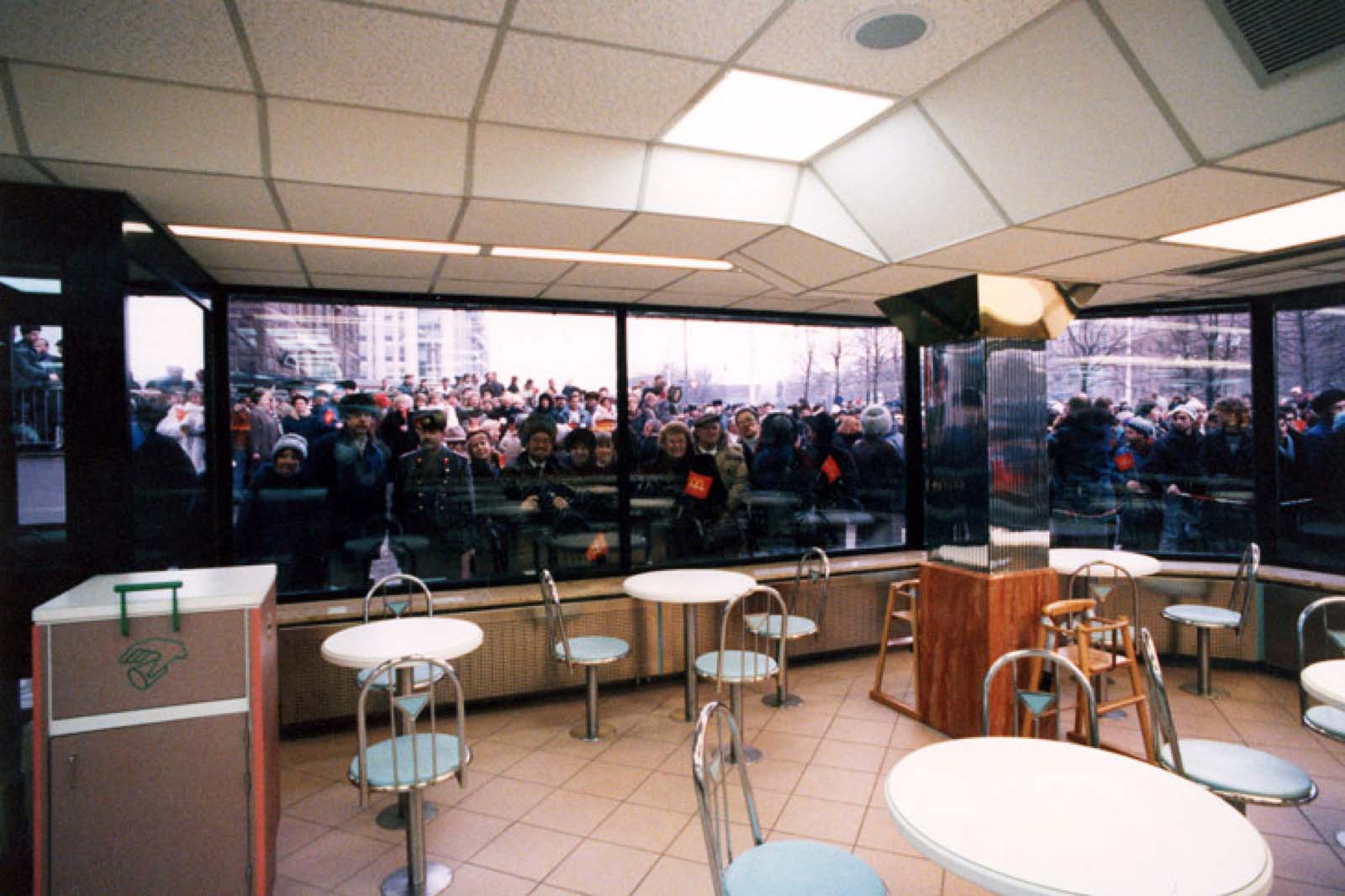
A plan first envisioned when George Cohon, founder and CEO of McDonald’s Canada, met Soviet officials at the ’76 Summer Olympics in Montreal.
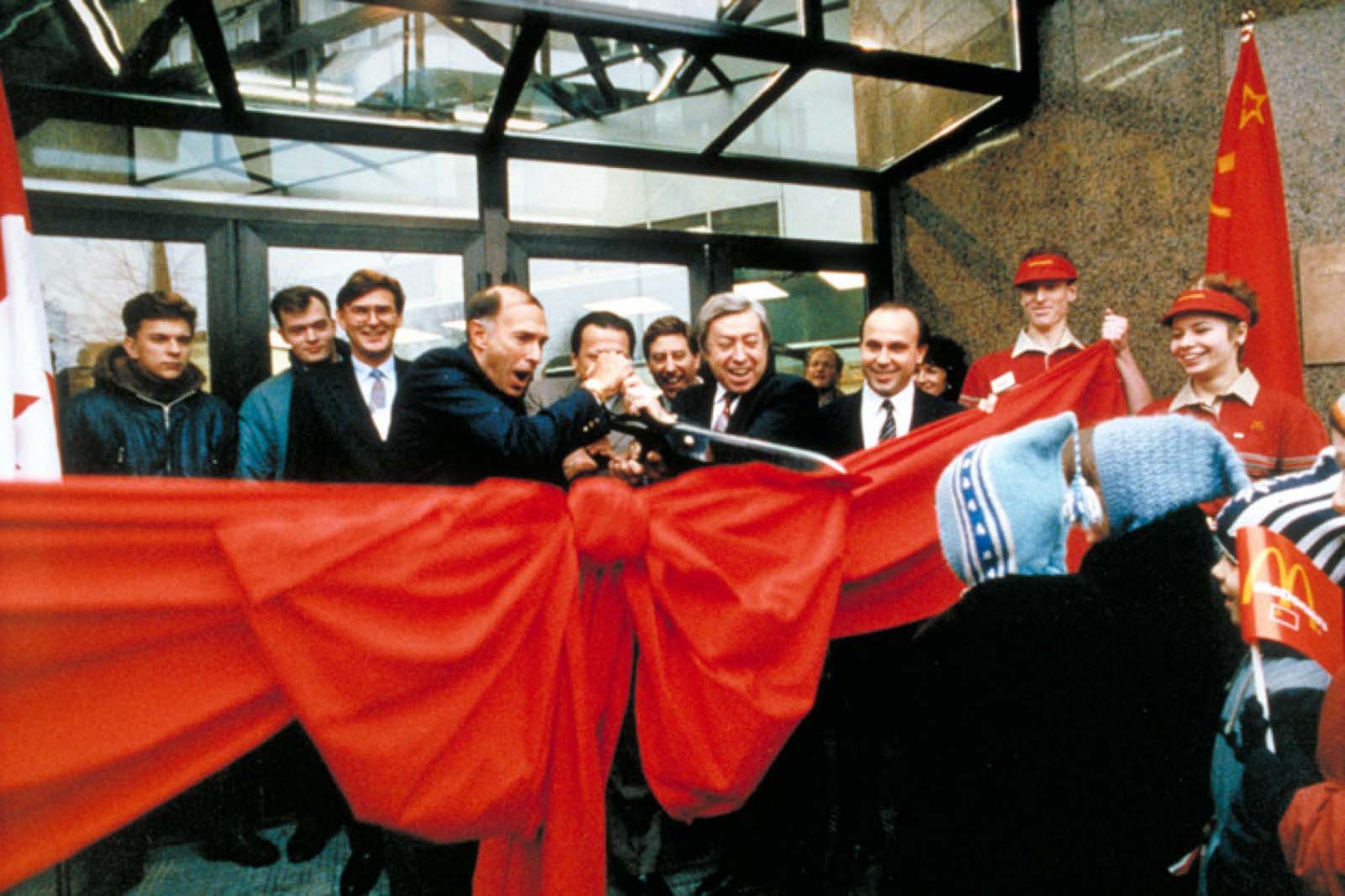
“I’m particularly proud of the people story behind the first opening, both from Canada and Russia, learning from each other and working as one team”.

“This is a story about co-operation between nations”.
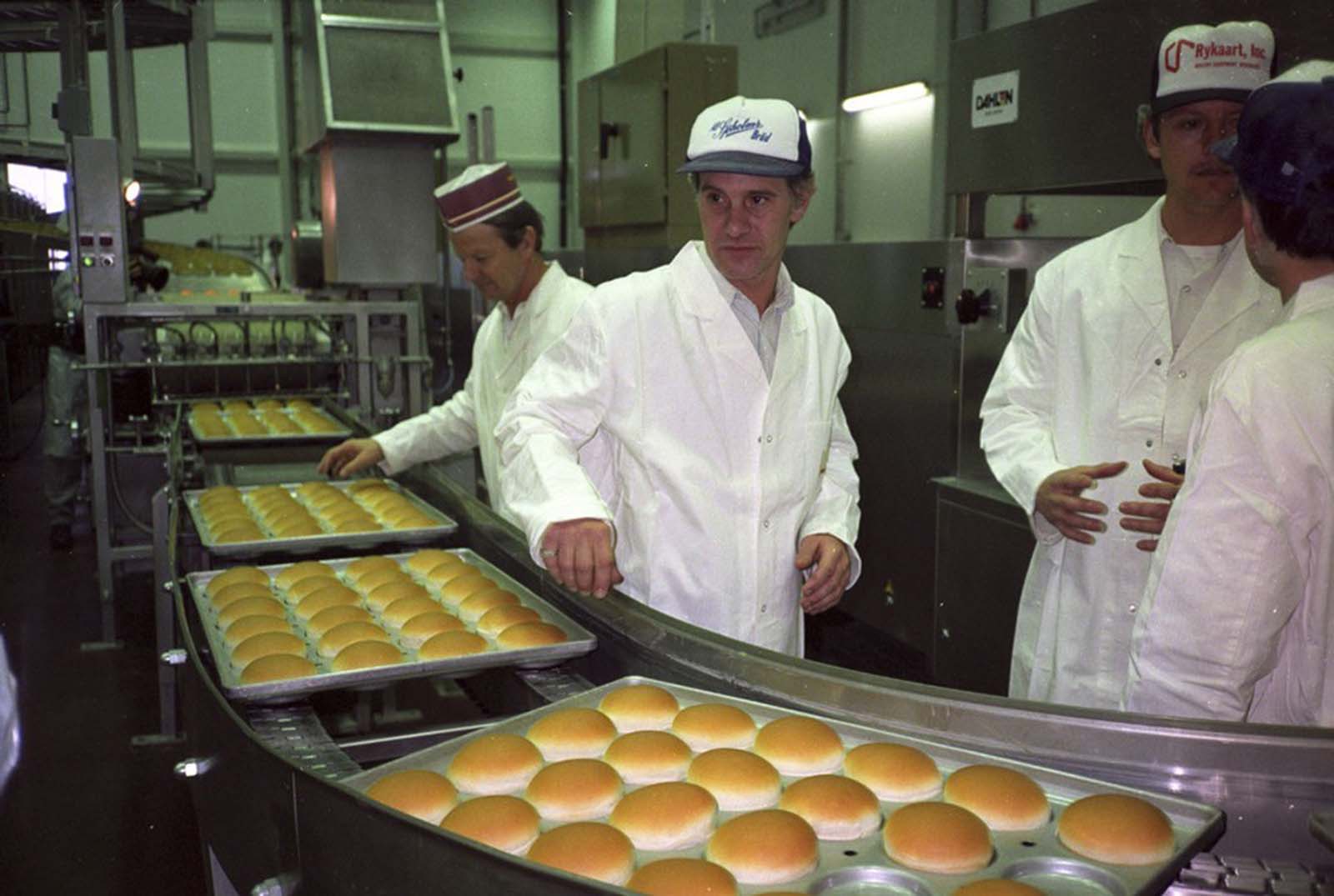
“And it is also a story about the Soviet who saw a sign outside reading ‘Rubles Only’ – and who said to me, ‘This is my restaurant’”.
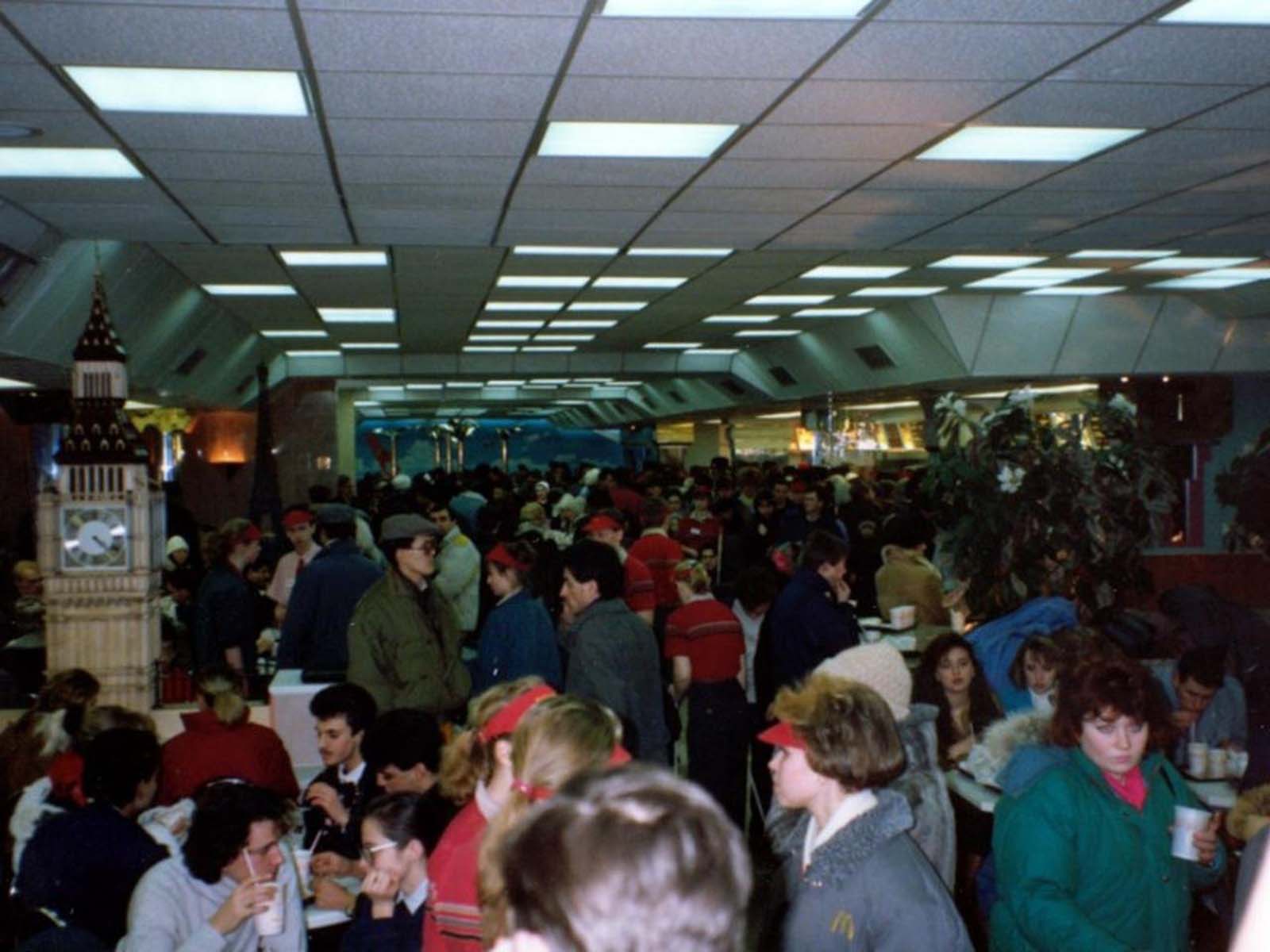
The opening drew many important people.
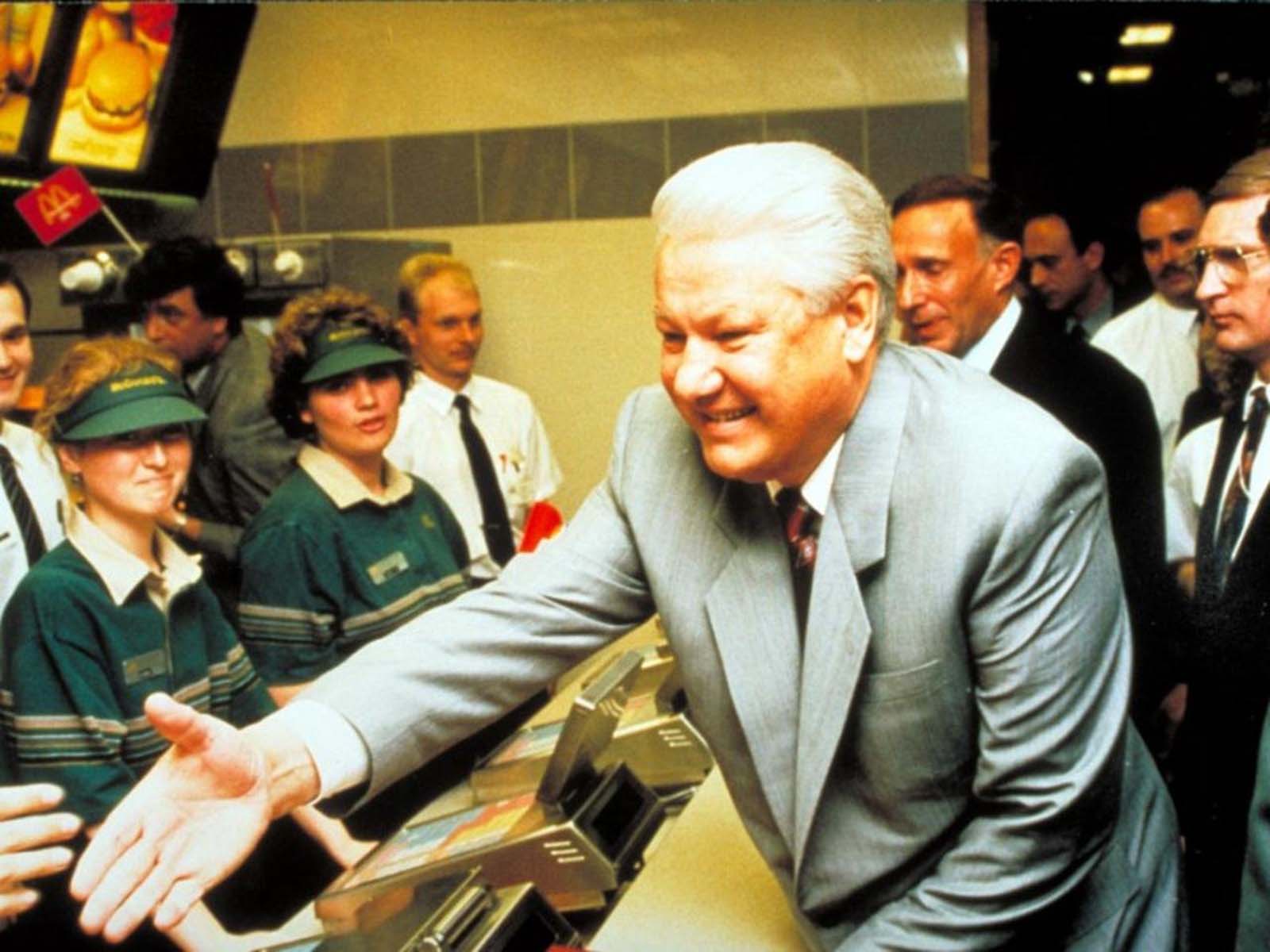
The opening ceremony of the second restaurant in 1993 was even attended by President Boris Yeltsin.
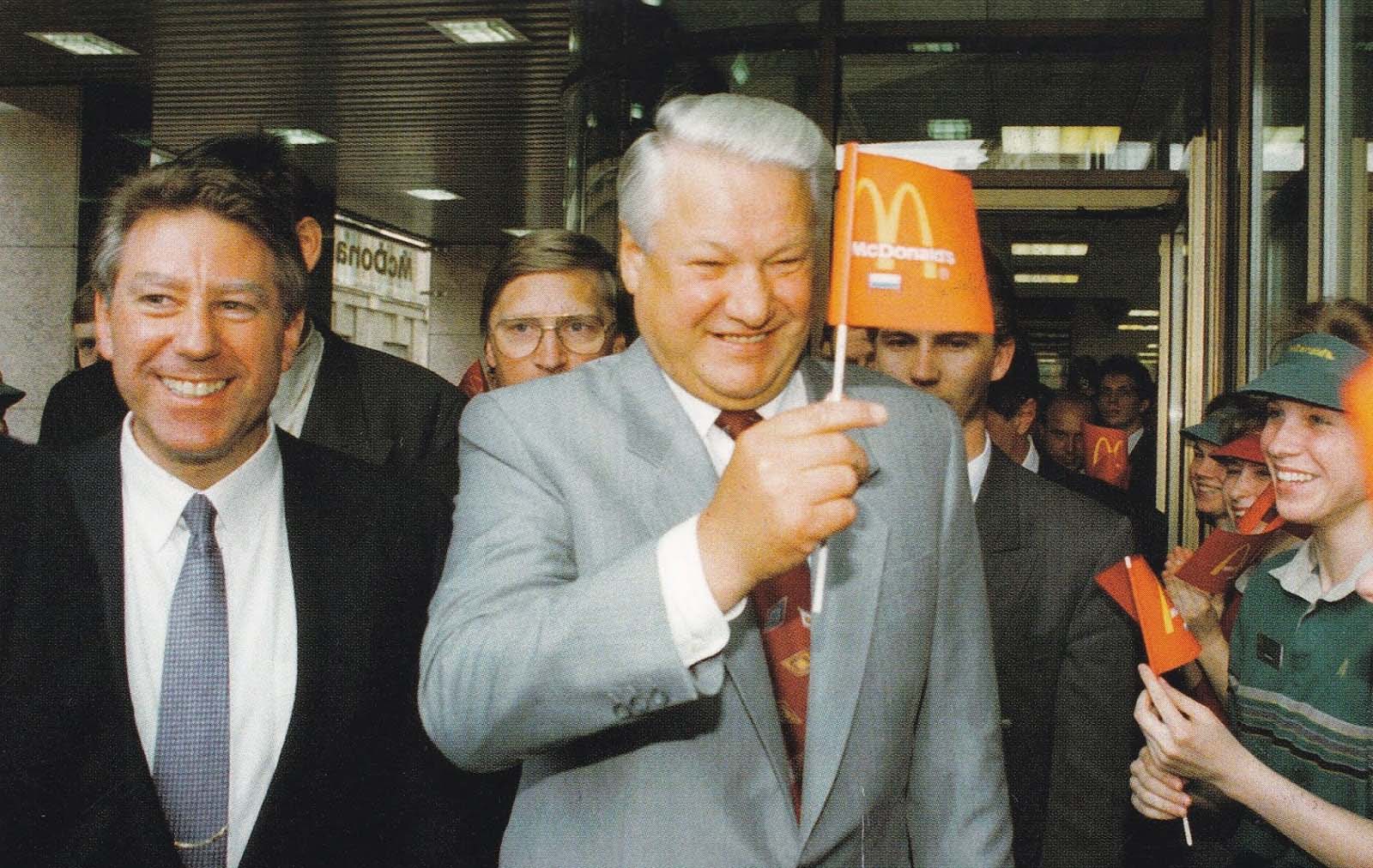
Waiving the capitalism “flag”.
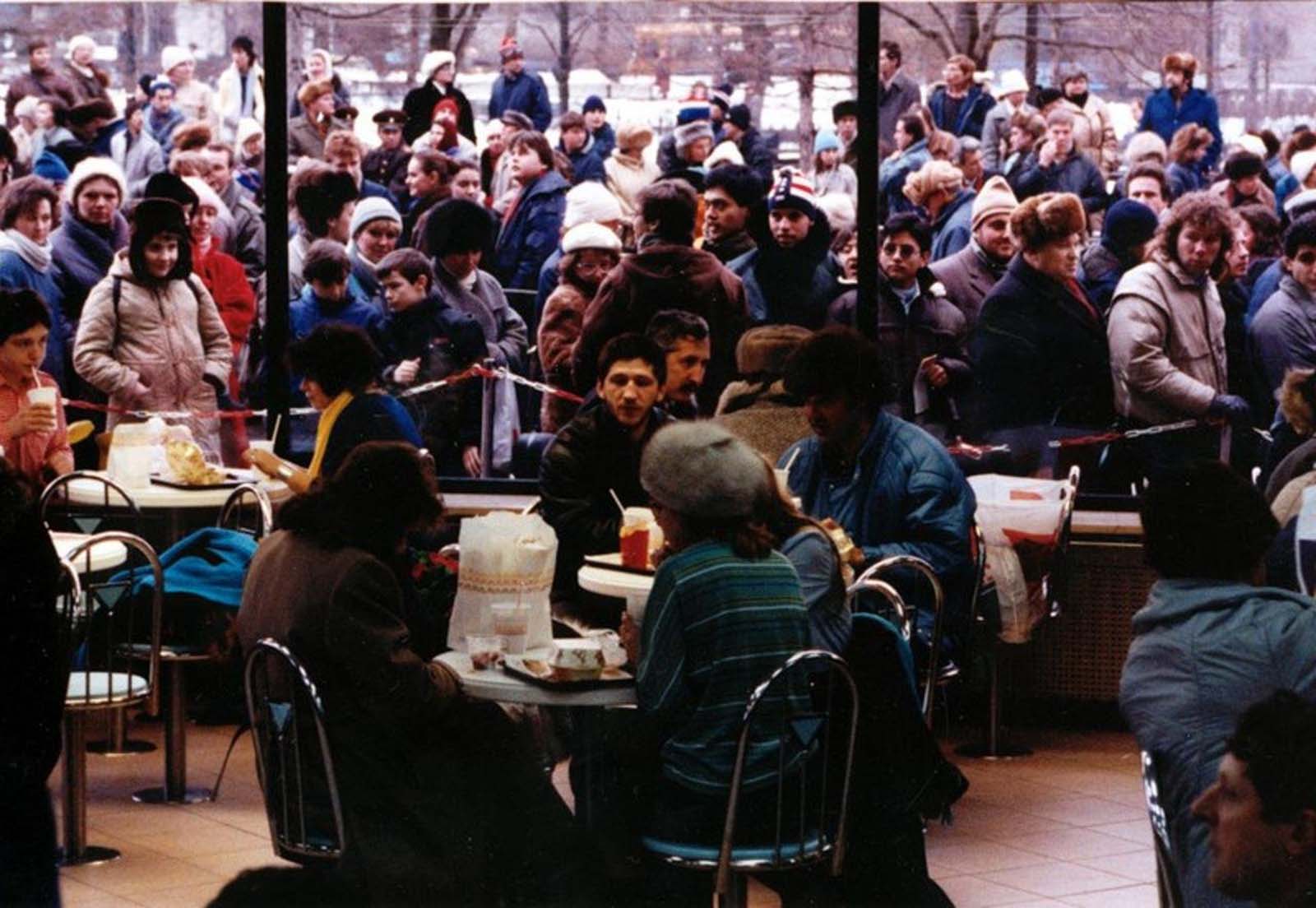
Huge crowd lined up outside the first McDonald’s in Moscow.
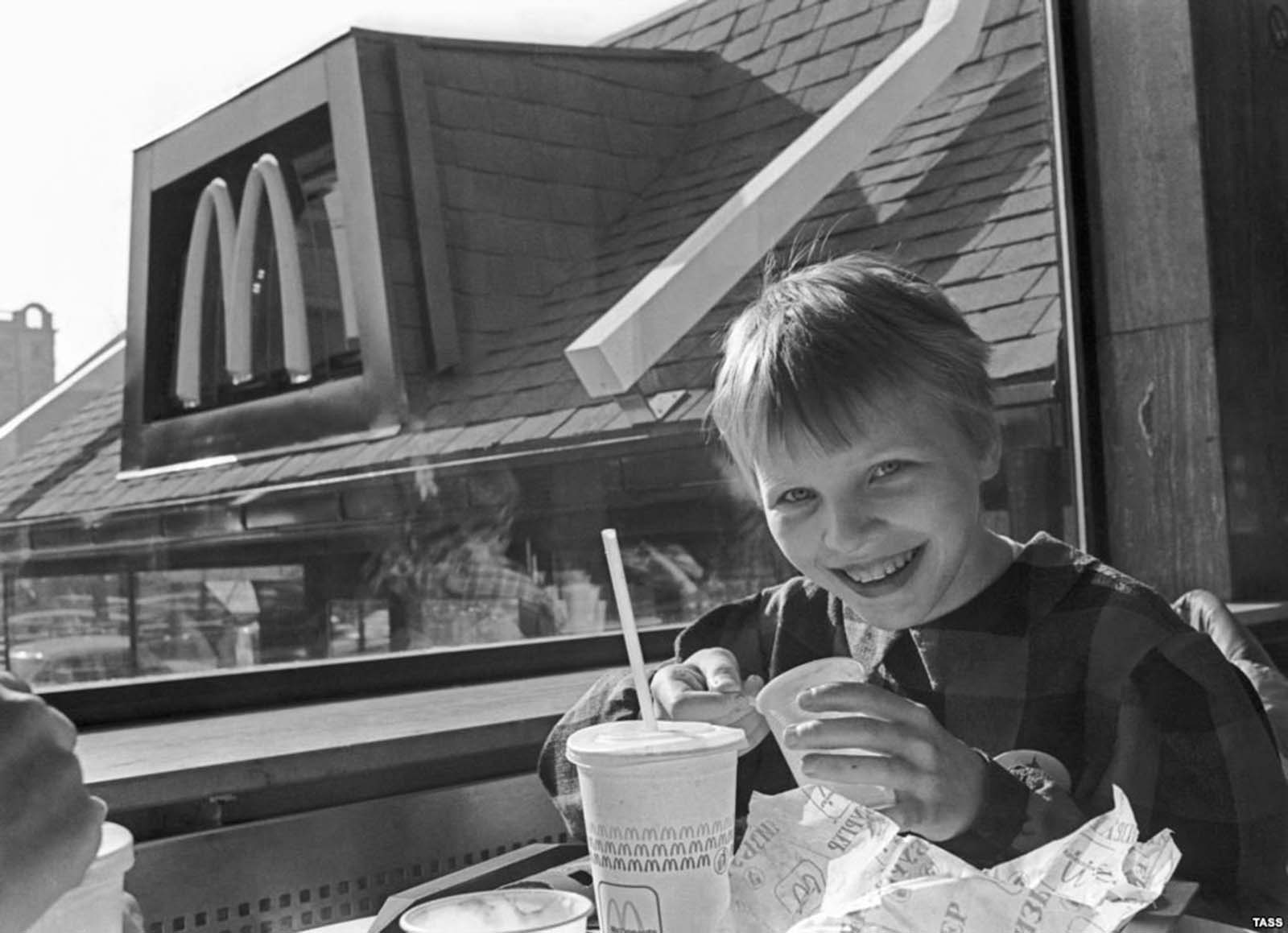
And people couldn’t get enough.
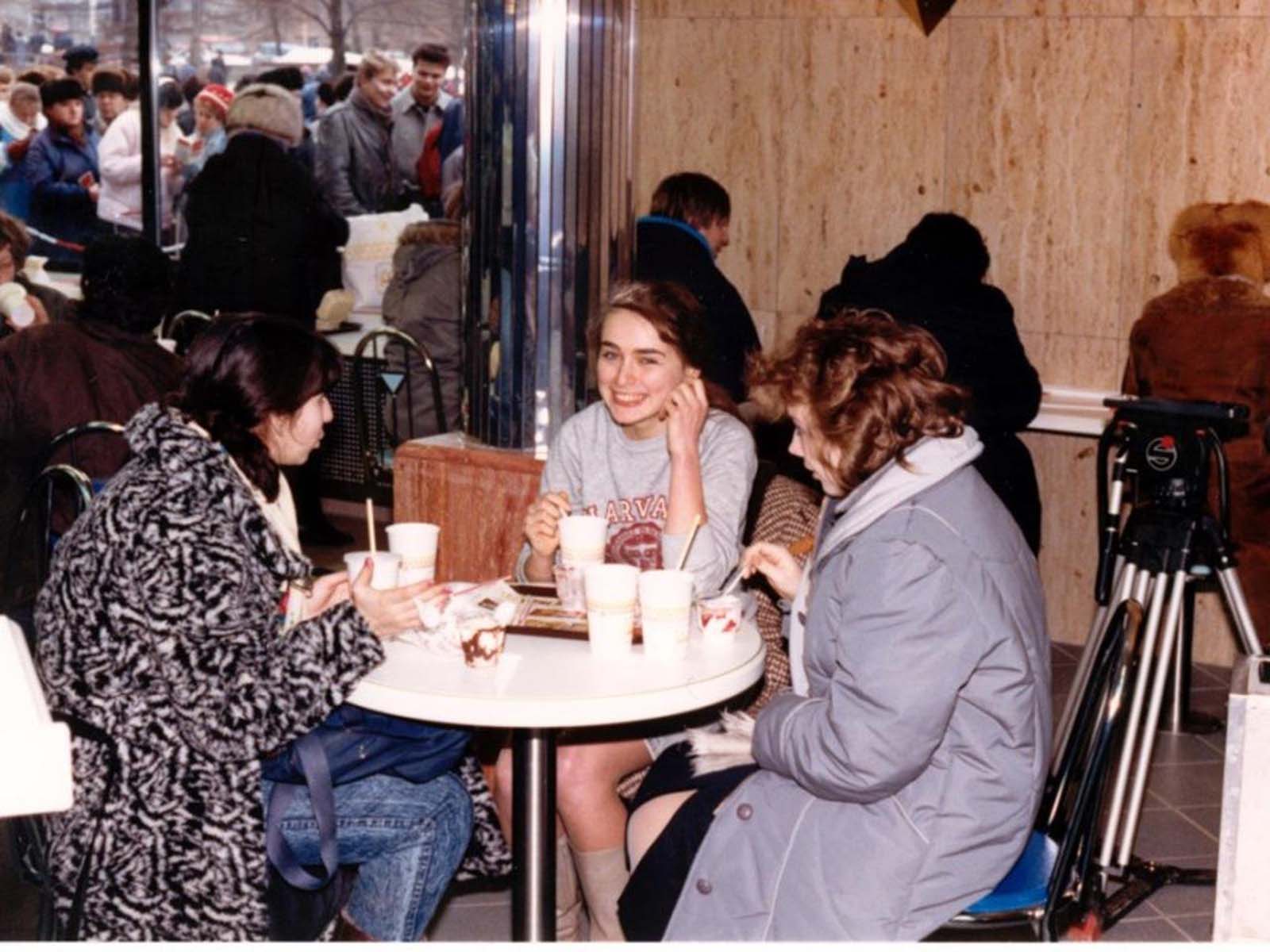
In total, over 30,000 customers passed through the doors on the opening day of the restaurant.
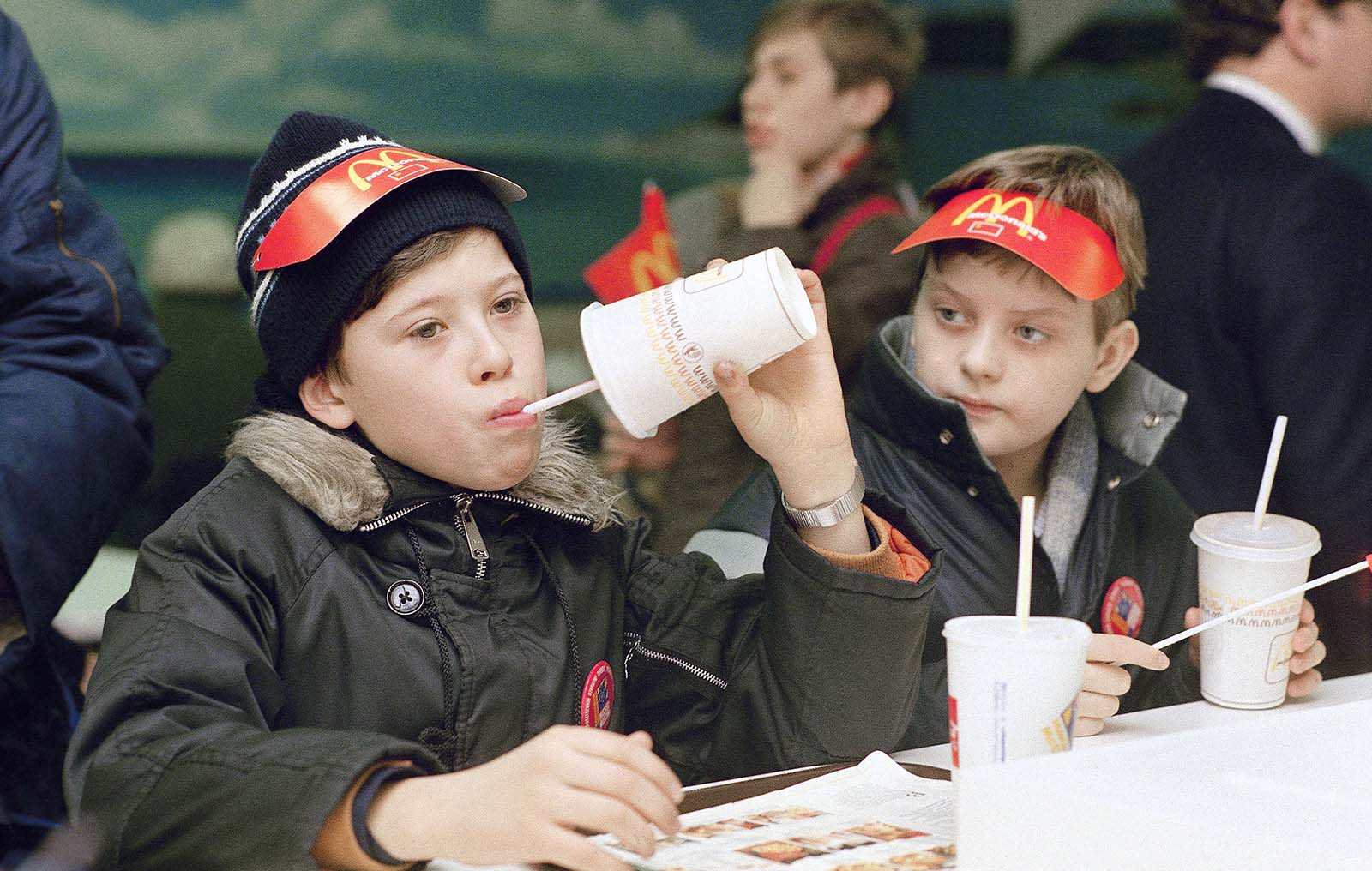
Setting a record for the number of customers served by a single McDonald’s in a day.
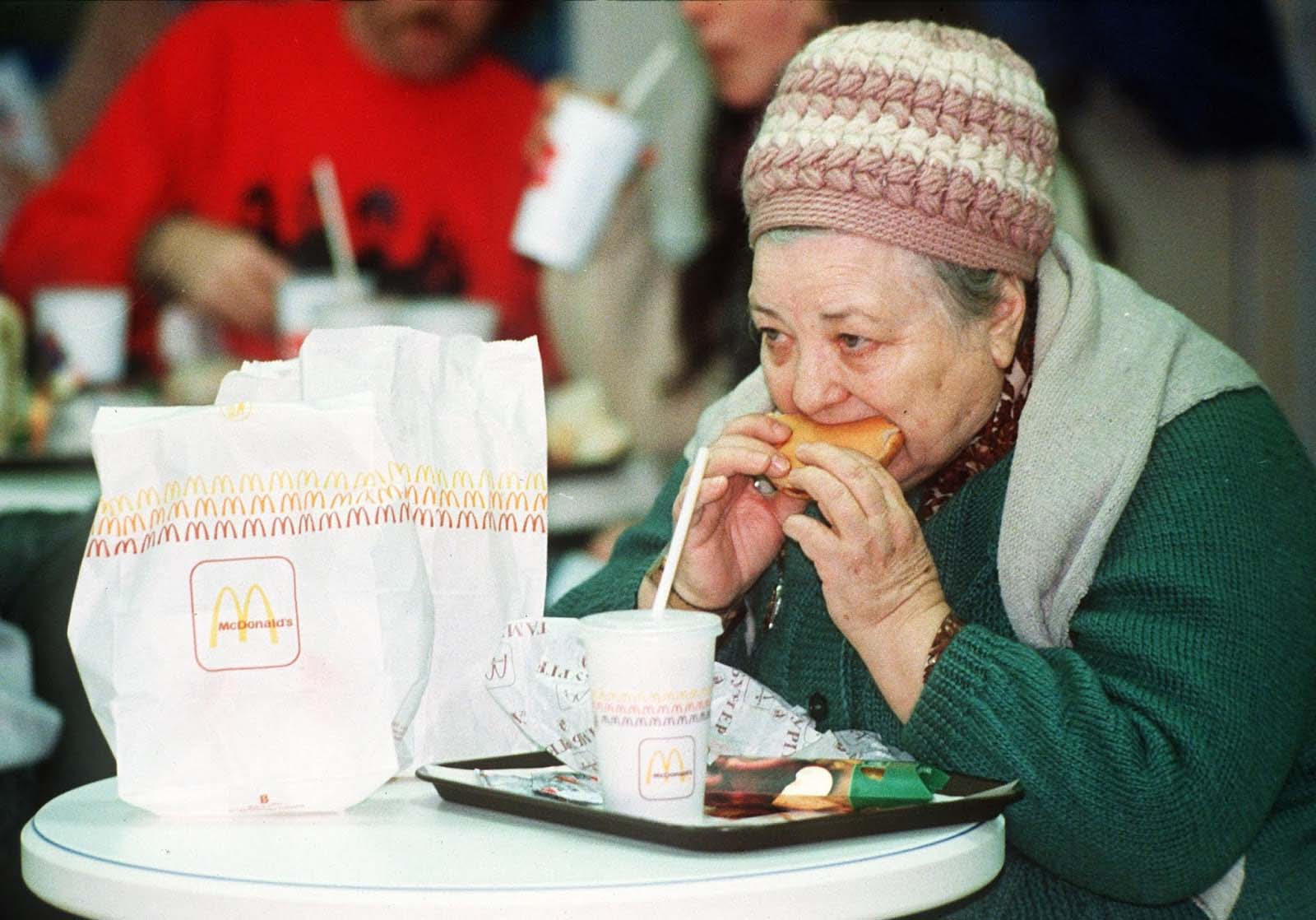
An old lady enjoyed her burger.
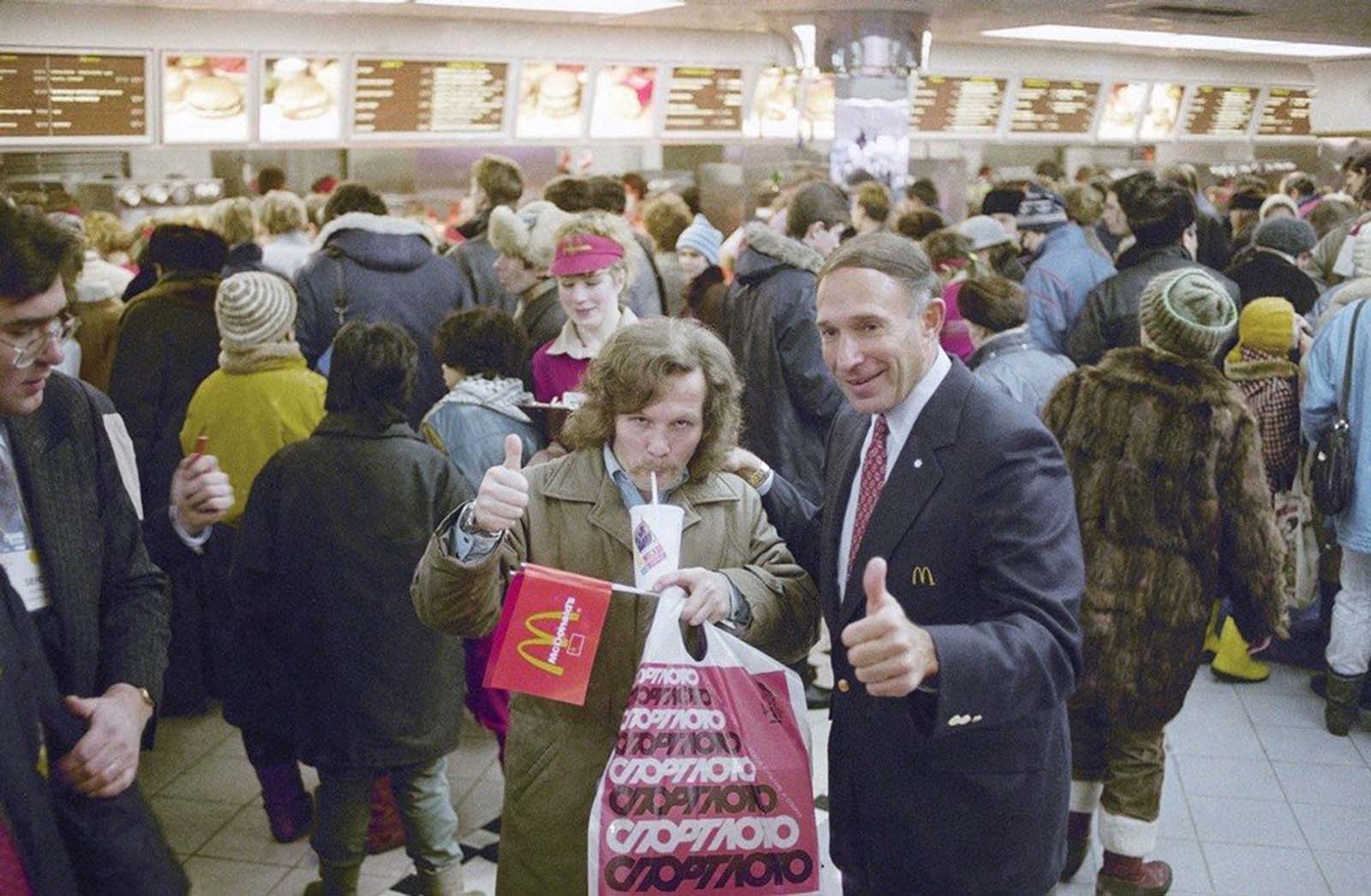
The Soviet Union dissolved on December 26, 1991.